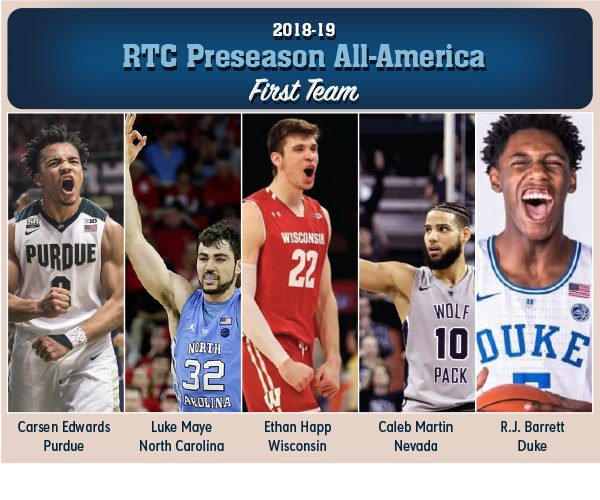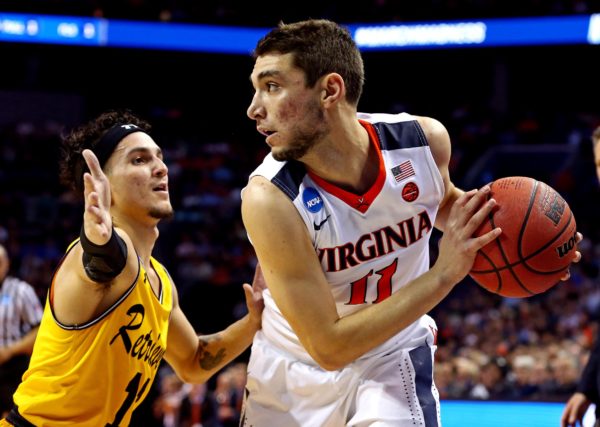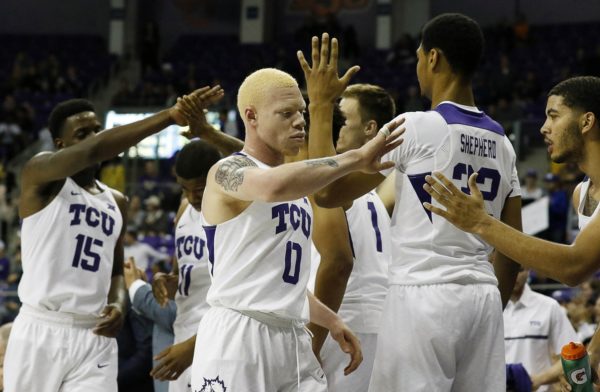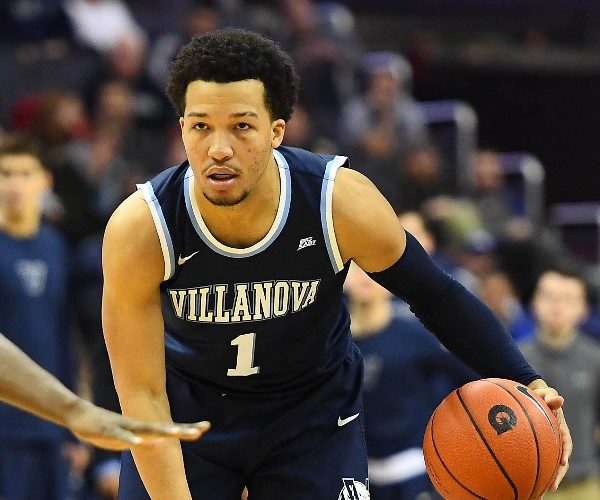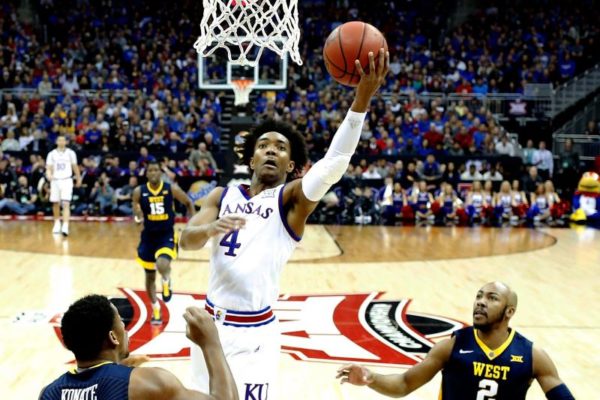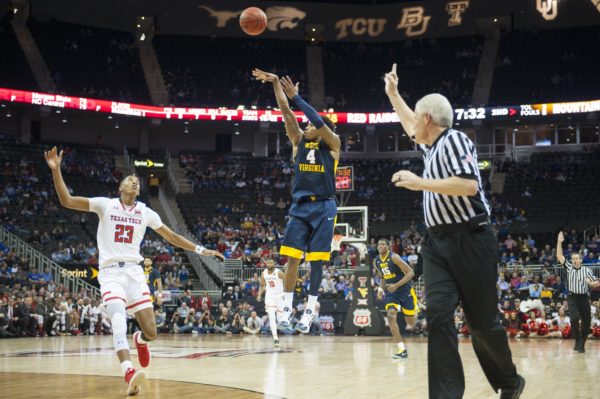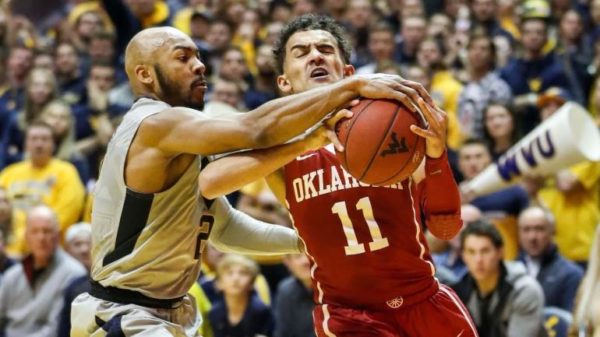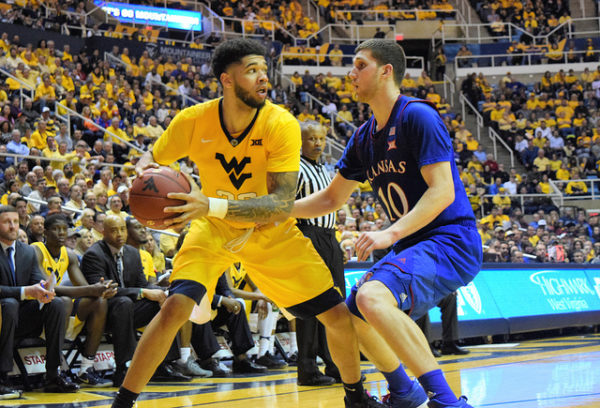Rushed Reactions: Big 12 Semifinal Friday
Posted by Brian Goodman on March 15th, 2019
While West Virginia‘s quarterfinal upset of Texas Tech hammered home the Big 12’s lack of elite teams, it also highlighted the league’s parity and unpredictability when it comes to individual games. The conference figures to send something like seven teams to the Big Dance, but it’s tough to feel confident about any of them reaching the Elite Eight, much less the Final Four. All that said, there was something odd about one of the co-champions not being in the house for the semifinals, having been bounced by the league’s worst team. That didn’t stop the two semifinal bouts from giving us some drama, however. Here are some of the key takeaways from Friday night’s action.
- Marial Shayok carries Iowa State home. After a one-year layoff, the Cyclones are back in the Big 12 Tournament championship, marking the fourth time in six seasons that Iowa State has made it to Saturday night. This time around, they have the Virginia transfer to thank for some clutch play down the stretch. Trailing 55-52 with 2:38 remaining, Shayok bombed a pair of triples on consecutive trips to give the Cyclones the edge they needed to outlast the Big 12 regular season co-champions. Shayok wasn’t just a shooter on Friday night, however, routinely taking advantage of Dean Wade‘s absence to drive the lane and finish in transition. It was just a few weeks ago that the Iowa State roster looked fractured, but even though Kansas State wasn’t at full strength tonight, the Cyclones’ performance restored the notion that they’re a second weekend NCAA threat no matter what happens tomorrow in Kansas City.
- Shorthanded Kansas State effort affirms Wildcats’ offensive challenges. Without Wade in the lineup, Bruce Weber‘s team made scoring look like a trip to the dentist. Ugly as it was, Kansas State had plenty of chances to come out on top tonight, but a 1-of-14 stretch late in the first half put an end to that. The Wildcats only had to be passable down low to secure a victory, but they couldn’t even muster that much. The silver lining here may be that the Wildcats are certainly capable of better even if they don’t get Wade back at full strength in the NCAA Tournament, but they’ll have to lean even more heavily on their vaunted defense if they can’t cash in easy looks, and as excellent a defender as Barry Brown is, it’s unreasonable to ask him to carry that much.
- Is this closer to the real Quentin Grimes? Kansas‘ most highly-touted freshman has been an enigma all year, but he went nuclear on the Mountaineers in the first half this evening, burying all five of his threes on his way to 16 points before intermission. Grimes’ confidence picked up as his shots fell, eventually giving him enough to get inside, which he’s been hesitant to do for long stretches. The Jayhawks will never be as good as they could have been with Udoka Azubuike and Silvio De Sousa still playing, but the question now becomes how heavily Grimes can be counted on when Ochai Agbaji or Marcus Garrett sputter as they did in the first half Friday night. That’s probably not the difference between a trip to the Final Four and the Elite Eight, but every team that eyes a deep NCAA Tournament run needs a guy who can get hot for a stretch or two when the rest of the team is stuck in neutral, and Grimes can certainly provide that for Kansas.
- West Virginia bows out, but not before giving us something to remember it by. There were several times this season where you could tune into a Mountaineers’ game and see Bob Huggins‘ sideline demeanor or read snippets from his postgame press conferences and draw the conclusion that coaching this season’s team was the last thing on Earth he wanted to do. Despite being in the twilight of his career with a team littered with injuries, dismissals and transfers, the coaching lifer showed that his team still had something left in its shocking upset of Texas Tech on Thursday night. Unable to do the near-impossible and beat three clearly better teams in three days, West Virginia exited the tournament gracefully with a hard-fought loss to Kansas in a situation where they were simply outgunned. The Mountaineers will regroup next year without Esa Ahmad, Beetle Bolden and probably Sagaba Konate, but keep some intriguing pieces in Lamont West, Derek Culver, Jordan McCabe, Brandon Knapper and Jermaine Haley. Perhaps the most fascinating contributor of that bunch will be Culver, who was held out of his first 10 games this year due to academic issues, but went on to post the Big 12’s highest individual defensive rebound percentage in league play (30 percent) as a freshman while soaking up 73 percent of available minutes. Add McDonald’s All-American Oscar Tshiewbe down low and it’s not unreasonable to expect the Mountaineers to contend for a top-half finish in 2019-20.





























